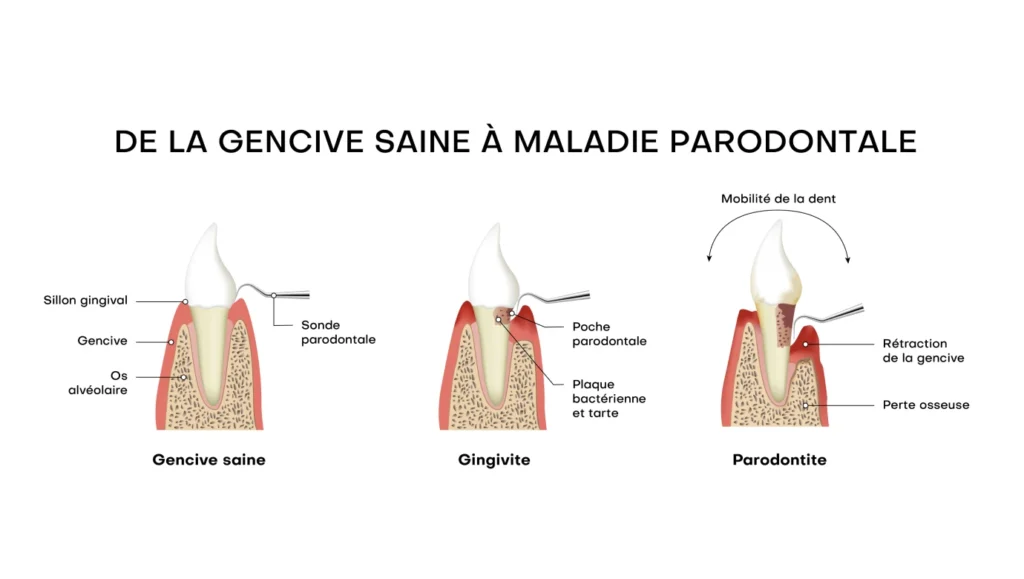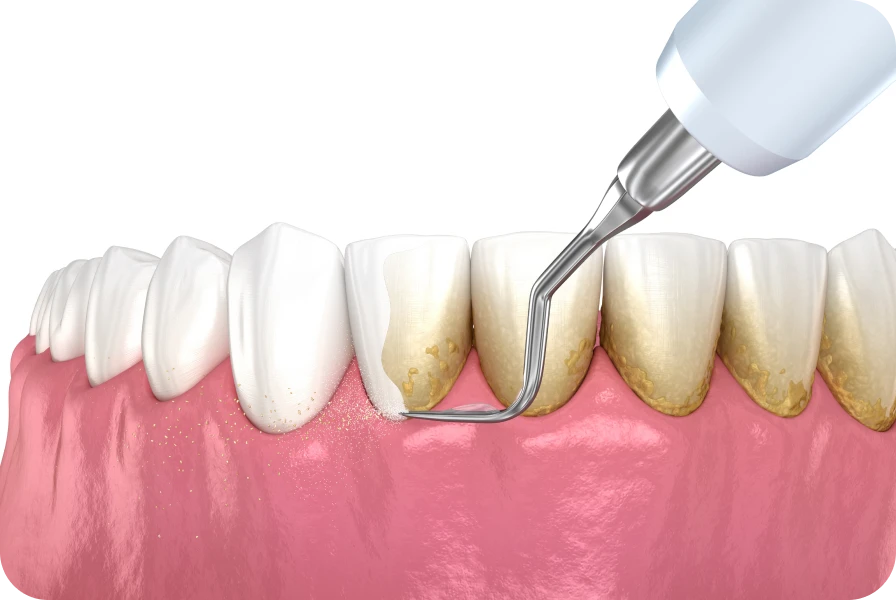Periodontal diseases
Periodontal Diseases: Understanding and Prevention
Signs and Symptoms of Periodontal Diseases
Be attentive to the early signs of periodontal diseases. These diseases affect the tissues that support your teeth. Observe your gums daily. If they bleed easily, this may indicate a problem. Persistent bad breath is also a warning sign. Furthermore, note if your teeth seem to move more than usual. These symptoms are important indicators. Do not ignore these warning signs. Consult a dentist as soon as possible for a thorough evaluation.

Main Causes of Periodontal Diseases
Understand the causes of periodontal diseases to better prevent them. The accumulation of dental plaque is the primary factor. This plaque is a sticky film of bacteria that forms on the teeth. If not removed, it hardens into calculus. Calculus is more difficult to remove and promotes gum inflammation. Other factors include smoking, poor diet, and certain systemic diseases. Stress can also play a role. Adopt good oral hygiene to reduce the risks.
The Impact of Smoking
Avoid smoking to protect your gums. Tobacco severely harms periodontal health. It reduces blood supply to the gums, thereby compromising their ability to defend against infections. Furthermore, it often masks the early signs of periodontal disease. Smokers are more likely to develop a severe form of the disease. Make the decision to quit smoking today. This can make a significant difference for your gum health.
The Relationship between Systemic Diseases and Periodontal Diseases
Remain vigilant if you suffer from systemic diseases such as diabetes. These conditions increase the risk of periodontal diseases. Diabetics, in particular, are more vulnerable. Blood sugar control is essential to prevent periodontal complications. Consult your dentist regularly for appropriate monitoring. The health of your gums often reflects the state of your general health. Take care of your gums to improve your overall well-being.
Prevention of Periodontal Diseases
Adopt healthy habits to prevent periodontal diseases. Brushing your teeth twice a day is crucial. Use fluoride toothpaste to strengthen enamel and fight bacteria. Flossing is also essential. It helps remove plaque between teeth, where a toothbrush cannot reach. Supplement your routine with an antibacterial mouthwash. Schedule regular visits with your dentist. Professional cleaning helps remove calculus and detect problems at an early stage.
Recommended Brushing Techniques
Use the correct technique to maximize the effectiveness of your brushing.
Hold your toothbrush at a 45-degree angle to your gums. Use gentle circular motions. Do not scrub too hard, as this can damage your gums.
Brush all tooth surfaces, including the inner and chewing surfaces. Dedicate at least two minutes to each brushing session.
Change your toothbrush every three months to ensure good hygiene.

The Importance of Flossing
Incorporate flossing into your daily routine. It helps remove plaque and food debris between teeth. Use approximately 45 centimeters of floss. Wrap it around your fingers and gently slide it between each tooth.
Form a C-shape curve around the tooth and slide it gently under the gum line. Repeat this action for each interdental space. Flossing is essential for preventing gingivitis and other periodontal diseases.
The Benefits of Regular Dental Visits
Schedule regular visits with your dentist for professional cleaning. These visits help prevent periodontal diseases. Your dentist can detect early signs of disease and intervene promptly. Professional cleaning removes calculus, which cannot be removed by simple brushing. Furthermore, these visits provide an opportunity to discuss your oral health concerns. Adopt a proactive approach to maintain optimal periodontal health.
Treatments for Periodontal Diseases
Act promptly if you are diagnosed with periodontal disease. Treatment depends on the severity of the disease. A deep cleaning, known as scaling and root planing, is often necessary. This treatment removes plaque and calculus from below the gum line. In more advanced cases, periodontal surgery may be required. This helps clean deep pockets around the teeth. Follow your dentist’s recommendations to prevent disease progression.
Scaling and Root Planing

Scaling and root planing are non-surgical treatments. They are used to treat early-stage periodontal diseases.
Scaling involves removing calculus above and below the gum line.
Root planing smooths the tooth roots to help the gums reattach to the teeth. This treatment reduces periodontal pockets and promotes healing.
Follow your dentist’s instructions to maintain results after treatment.
Surgical Options for Advanced Periodontal Diseases
In cases of advanced periodontal disease, surgical intervention may be necessary. Surgical procedures aim to reduce periodontal pockets and regenerate lost tissues. Pocket reduction surgery is one option. It involves lifting the gums to clean the affected areas. Then, the gums are repositioned to reduce pocket depth. Another option is bone grafting. This procedure regenerates bone lost due to the disease. Discuss with your dentist to understand the options suitable for your case.
Follow-up after Periodontal Treatment
After periodontal treatment, regular follow-up is essential. Schedule frequent visits with your dentist to monitor healing. Maintain excellent oral hygiene at home. Continue to brush your teeth twice a day and floss. Your dentist may recommend more frequent cleanings to prevent disease recurrence. Adhere to your dentist’s recommendations to protect your periodontal health long-term.
Adopt a Healthy Lifestyle to Support Healing
A healthy lifestyle contributes to healing after periodontal treatment. Adopt a balanced diet rich in vitamins and minerals. Avoid sugary and processed foods that promote dental plaque. Stay well-hydrated to support saliva production, which helps protect teeth. Limit alcohol consumption and avoid tobacco, as they can delay healing. A healthy lifestyle strengthens your gum health and prevents disease recurrence.
Preventing Recurrence
Once periodontal disease has been treated, preventing recurrence is crucial. Maintain strict oral hygiene. Ensure you adhere to your follow-up appointments with your dentist. If you have a history of periodontal disease, you are at higher risk of recurrence. Take additional measures to protect your gums. Adopt a daily oral care routine and follow your dentist’s recommendations.
Take care of your gums to prevent periodontal diseases. Be attentive to warning signs and consult your dentist promptly if in doubt. Adopt healthy lifestyle habits and maintain rigorous oral hygiene. Periodontal diseases are preventable and treatable if addressed in a timely manner. Protect your gums to ensure the long-term health of your teeth and mouth.
